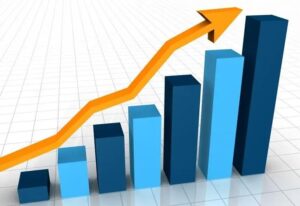Business Intelligence (BI) has become an essential tool for many organizations. BI allows businesses to make data-driven decisions, gain insights into customer behavior, and identify new opportunities for growth. As technology continues to advance, the future of BI looks promising. This article will explore the trends and predictions for the future of business intelligence.

Introduction
The introduction will provide a brief overview of what BI is and why it is important. It will also introduce the topic of the article and provide an overview of what will be covered.
Trend 1: Augmented Analytics
Augmented analytics refers to the use of machine learning algorithms to automate data preparation, analysis, and insight generation. In the future, we can expect to see a continued increase in the use of augmented analytics. This trend will enable businesses to make more informed decisions and identify opportunities that may have been missed in the past.
Trend 2: Cloud-Based BI
Cloud-based BI solutions are becoming increasingly popular. They offer a more flexible and cost-effective solution than on-premise solutions. In the future, we can expect to see more businesses moving to cloud-based BI solutions. This trend will enable businesses to access data from anywhere and at any time, making it easier to make data-driven decisions.
Trend 3: Collaborative BI
Collaborative BI refers to the sharing of data and insights across different teams within an organization. In the future, we can expect to see more businesses adopting collaborative BI solutions. This trend will enable businesses to work more efficiently, share knowledge, and make better decisions.
Trend 4: Predictive Analytics
Predictive analytics uses machine learning algorithms to analyze data and make predictions about future events. In the future, we can expect to see an increase in the use of predictive analytics. This trend will enable businesses to make more informed decisions and identify opportunities before they arise.
Trend 5: Mobile BI
Mobile BI refers to the ability to access BI solutions on mobile devices. In the future, we can expect to see a continued increase in the use of mobile BI. This trend will enable businesses to access data on the go and make decisions from anywhere.
Trend 6: Data Governance
Data governance refers to the management of data policies and procedures. In the future, we can expect to see a continued focus on data governance. This trend will enable businesses to ensure that their data is accurate, secure, and compliant with regulations.
Trend 7: Natural Language Processing (NLP)
Natural Language Processing (NLP) refers to the ability of machines to understand human language. In the future, we can expect to see more businesses adopting NLP solutions. This trend will enable businesses to analyze unstructured data, such as customer reviews and social media posts, to gain insights into customer behavior.
Trend 8: Data Visualization
Data visualization refers to the use of charts, graphs, and other visual aids to help people understand data. In the future, we can expect to see a continued focus on data visualization. This trend will enable businesses to communicate insights more effectively and make data more accessible to everyone.
Trend 9: Integration with Other Technologies
In the future, we can expect to see more integration between business intelligence and other technologies such as artificial intelligence, the Internet of Things (IoT), and blockchain. This trend will enable businesses to gain insights from new sources of data and make even more informed decisions.
Trend 10: Self-Service BI
Self-service BI refers to the ability for business users to access and analyze data without the help of IT or data analysts. In the future, we can expect to see a continued increase in the use of self-service BI solutions. This trend will enable businesses to become more agile and make decisions faster.
Trend 11: Real-Time Analytics
Real-time analytics refers to the ability to analyze data as it is generated. In the future, we can expect to see more businesses adopting real-time analytics solutions. This trend will enable businesses to make decisions faster and respond to changes in the market more quickly.
Trend 12: Data Democratization
Data democratization refers to the process of making data accessible to everyone in an organization. In the future, we can expect to see a continued focus on data democratization. This trend will enable businesses to empower their employees with data-driven insights and make decisions more collaboratively.
Trend 13: Prescriptive Analytics
Prescriptive analytics refers to the use of data and algorithms to recommend specific actions to take. In the future, we can expect to see more businesses adopting prescriptive analytics solutions. This trend will enable businesses to not only identify opportunities but also take action to capitalize on them.
Trend 14: Hybrid BI Solutions
Hybrid BI solutions refer to the use of both cloud-based and on-premise BI solutions. In the future, we can expect to see more businesses adopting hybrid BI solutions. This trend will enable businesses to take advantage of the benefits of both cloud-based and on-premise solutions, such as security and flexibility.
Trend 15: AI-Powered BI
AI-powered BI refers to the use of artificial intelligence to enhance BI solutions. In the future, we can expect to see more businesses adopting AI-powered BI solutions. This trend will enable businesses to automate data preparation, analysis, and insight generation, making it even easier to make data-driven decisions.
Conclusion
The future of business intelligence looks bright, with many exciting trends and predictions on the horizon. From augmented analytics to AI-powered BI, businesses can expect to benefit from advanced technologies that enable them to make more informed decisions, gain insights into customer behavior, and identify new opportunities for growth. By staying ahead of these trends, businesses can continue to evolve and stay competitive in a rapidly changing market.